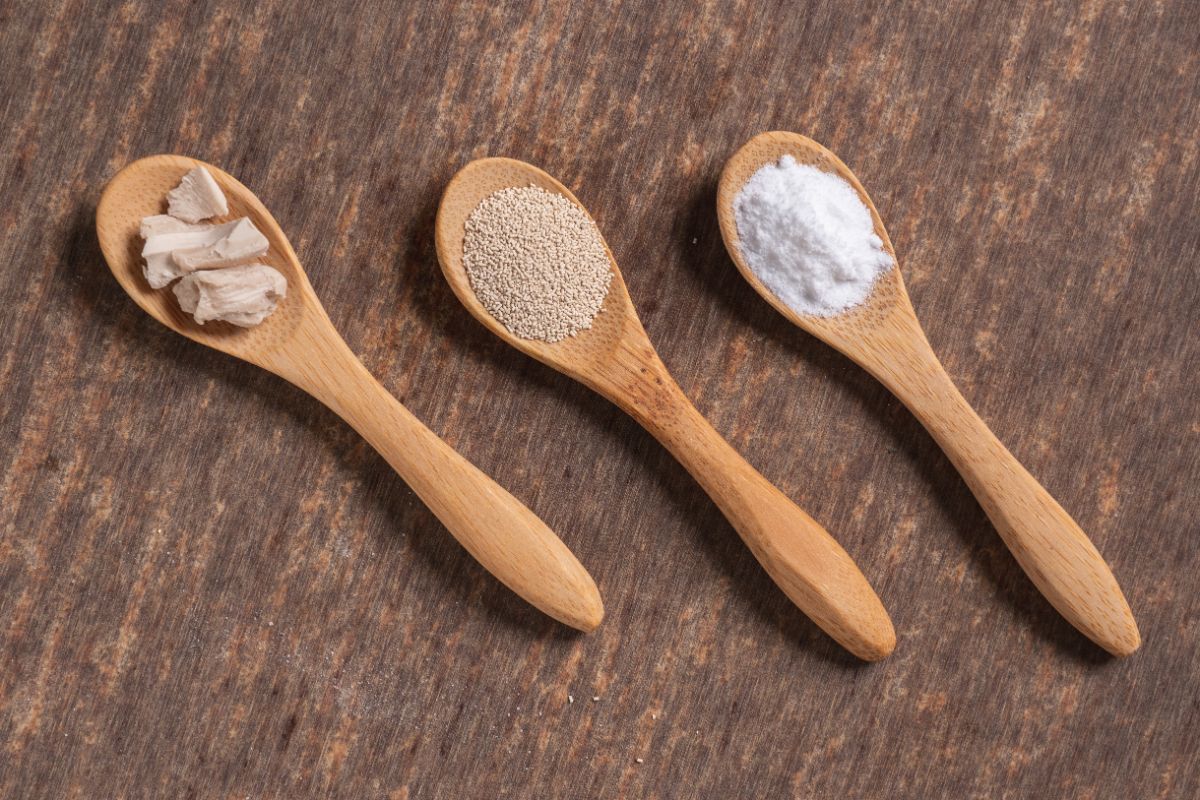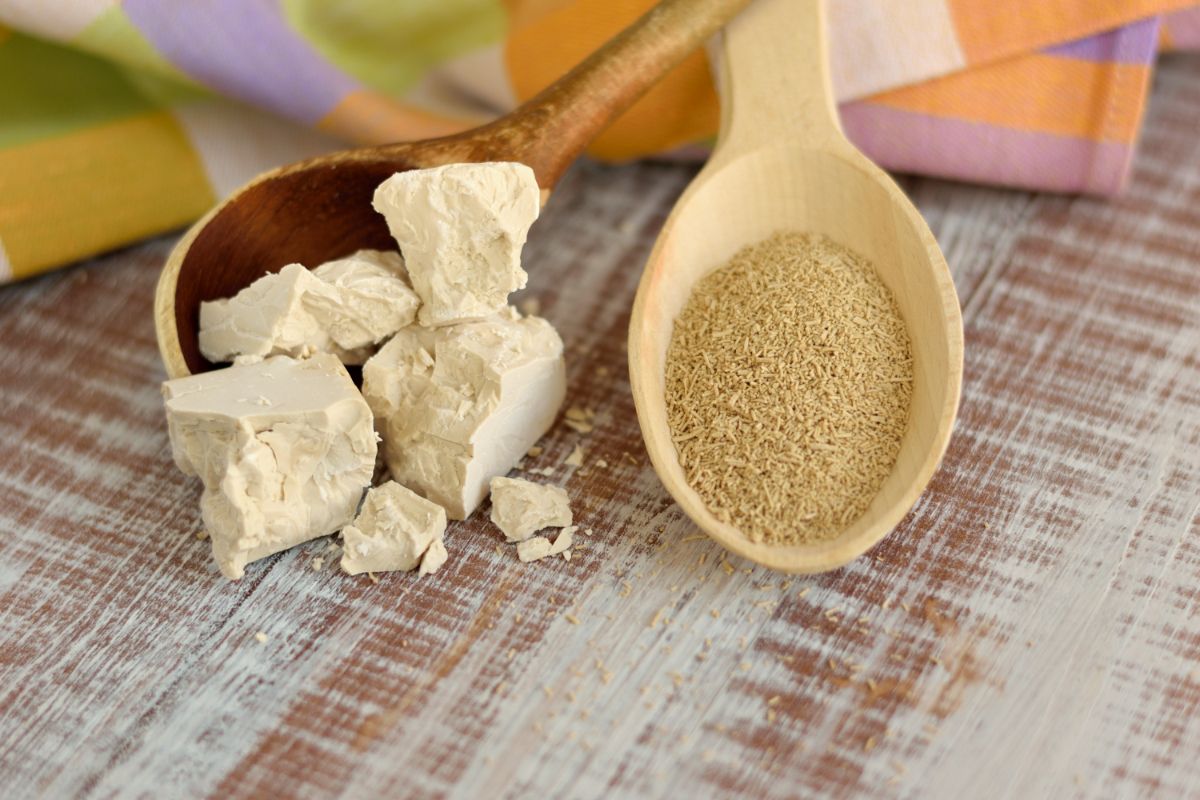Just like any other living organism, yeast has a shelf-life and dies. Normally, this duration depends on its type and the prevailing environmental conditions at the point of storage. Without proper care, yeast can untimely die. All you will see is a flatbread that doesn’t rise. However, it is painstaking to throw treasures like a baker’s yeast.

So, how to revive dead yeast? To be concise, yeast cannot be revived. Once it is dead, it cannot have a second life. But this doesn’t mean that the yeast is useless once its “Best If Used By” date is long gone. There are several ways that you can maximize on the yeast’s use.
*This article may contain affiliate links. As an Amazon Associate, I earn from qualifying purchases. Please take that into account.
- Dutch oven
- Large mixing bowl
- Measuring cups and spoons
- Bread thermometer (fancy or a budget one)
- Scoring lame
Extra (nice to have):
- Kitchen scale
- Dough scraper and bowl scraper (yes, they are different)
- Cooling rack
- Baking stone (you don’t need a dutch oven if you use this)
👉Learn how to make bread and pizza with this awesome book.
But first, how do you know that your yeast is dead?
Just as aforementioned, yeast is just like any other living organism. It requires some basic things to grow. These include warmth, food, and moisture. By exposing the yeast to these three basic needs, you can know whether it is alive or not.
The main yeast’s food supplement is sugary products. Molasses or any other type of processed simple sugar can work best in this process. Warm water provides both the moisture and warmth required for this process.
Fill a glass with ¼ cup of warm water. Using a thermometer, maintain the temperature of the water at about 100oF. Remember, low temperature will not activate the yeast fully if alive and high temperature will automatically kill it.
Into the water, add 1 teaspoonful of the simple sugar and stir to dissolve. Then, add 2 teaspoonfuls of yeast and leave it to rest for some time in a warm place. In about five minutes, you should be having bubbly or foamy, beer smelling yeasty water! If you don’t see anything, look out for your shopping bag for new yeast.
Uses of dead yeast
Normally, you will be hit with a thought of tossing the dead yeast immediately in the garbage for collection. It frustrates! But, what if you have a whole bag of dead yeast? Will you still toss it?

Here are some of the effective ways you can opt for to maximize the use of your dead treasures:
1. Add the yeast into your septic tank
Sure enough, you have come across the benefits of adding at least 1 teaspoonful of instant yeast into “homestead gut” once in four months.
The yeast keeps bacteria in the septic lively. It also aids in the breaking down of the solid wastes into tiny particles. However, this happens where the yeast is alive. Then, why should you add the dead yeast instead?
In large amounts, the yeast granules take a varying number of months to die. And, since dry yeast takes good months to die, chances are that a portion of it is still alive during this critical moment.
Therefore, by adding the yeast into your septic system, you will be maximizing on the use of the few viable granules. So far it is the best way to toss the dead yeast down the drain.
2. Sprinkle into soups
Did you know that it is the same fungi (Saccharomyces Cerevisiae) that is behind both bakers and nutritional yeast? In baker’s yeast, the fungus is alive, while in the nutritional yeast, it is dead.
Dead baker’s yeast is fully packed with nutrients such as folic acids, zinc, protein, selenium, and B-vitamins. It has low-fat content and 100% gluten-free.
Additionally, it doesn’t contain any type of sugar. The best way to consume all these nutrients into your body system is through adding the dead yeast into your soup. It forms a creamy soup even without additives such as milk contents.
But look, before adding the yeast into the soup, make sure that it is 100% dead. Viable yeast cells can be detrimental to your health when ingested into the body system. Heat the yeast at a temperature of about 180-210oF to make sure that it is all dead.
3. Make it into salads
You can ground the yeast into powder. Then, add it as a savory seasoning to dishes such as pasta, vegetables, and salads.
4. Sprinkle on popcorns
The fact that the “hippie dust” doesn’t leaven anymore makes it usable for a variety of options. The most popular one is sprinkling on the popcorn.
Though the yeast will not make the popcorn tastier or bring the cheese-like flavor, it forms a nutritious snack for any time of the day.
5. Use the yeast in the dough
Without much expectation on rising, you can add the deactivated yeast on different types of dough for its various nutrients.
Additional, with the dead yeast, you will realize that the dough formed kneads smoothly and faster. It is flexible and does not tear easily even stretched into a windowpane. It is ideal for wafers, pizzas, and biscuits.
6. As an alternative to the dairies
Dead yeast has a cheesy taste. When you ground the grains and add warm water, salt, pepper, and drops of olive oil, you will form a creamy cheese-like liquid.
Some of the meals that can be replaced with this advanced version include; grated parmesan and melted cheese.
Cashew yeast cheese spread is another gem you can make out of the deactivated grains. You can use the yeast spread on scrambled tofu as an alternative to cream cheese.
Lastly, vegans can use this yeast spread in place of the egg products for their baked goods.
Conclusion
Since once the yeast is dead there is no turning back, it is better to take precautionary measures to avoid unnecessary wastage.
Know the type of yeast you are working with and its expiration date. Before moving away from the point of purchase, read the guidelines of the yeast’s storage. Instant yeast requires refrigeration.
Therefore, don’t purchase extra quantities that you will not store where there is no fridge. Otherwise, the best way to avoid incidences of dead yeast is by regulating your purchasing power relative to your monthly baking timetable.
